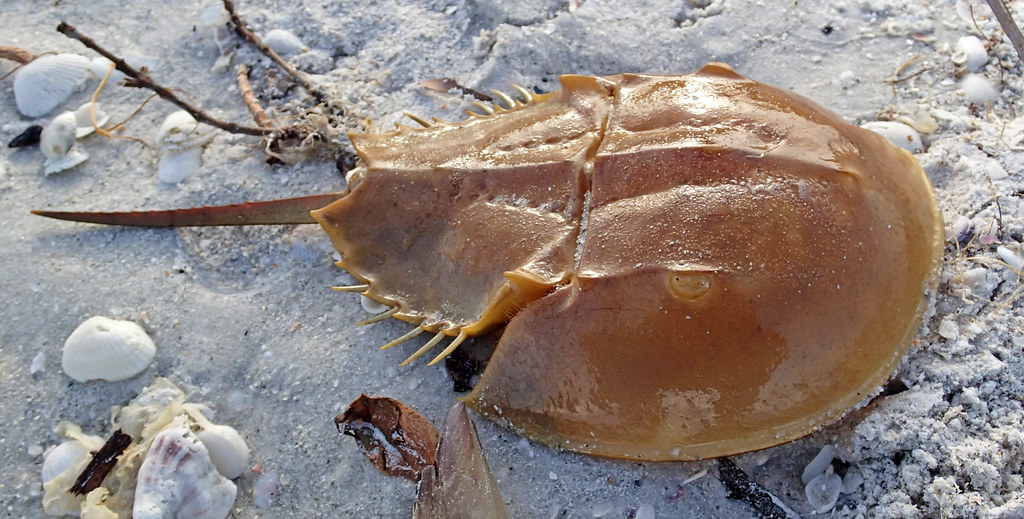By Eva Vitucci
The horseshoe crab, an animal that’s actually more closely related to sea spiders than sea crabs, has swum through our coastal waters for the past 445 million years – dating them beyond the existence of dinosaurs!
While these animals are ancient, they are relatively well-equipped to handle today’s world. In fact, the horseshoe crabs found today are highly similar to their great ancestors, likely because of their protective physical structure. In short, these animals have two hard protective shells and a spiky tail that protects them from predators. They also have 10 pairs of eyes that help them detect light, find their mates, and search for food. In addition to being physically equipped to survive in today’s world, these ancient animals help other animals survive. In particular, horseshoe crabs play an important role in keeping humans healthy.
Within the blood cells of a horseshoe crab lie important proteins that, when released by the blood cell, can form a sticky, gel-like blood clot. These proteins are mainly released when the blood cell detects a component of a bacterial infection known as an endotoxin. As a result, the invading bacteria becomes surrounded in a gel-like blockade, protecting the horseshoe crab from its damaging effects. In other words, when endotoxins are present in their blood, their blood quickly forms a clot. Interestingly, we as humans are also very sensitive to endotoxins but lack the efficient ability to remove endotoxins from our systems, unlike the horseshoe crabs. Unfortunately, endotoxins can contaminate many items, such as our vaccines or implanted medical devices, which can cause dangerous infections in humans. Thus, in the 1960s, a test known as the Limulus amebocyte lysate (LAL) test was developed to examine medical products in horseshoe crab blood in order to determine if these products were contaminated with harmful endotoxins. A modified version of this test still exists today, and as a result, we have many horseshoe crabs to thank for our safer medical applications!
Edited by Keean Braceros and Meryem Ok

